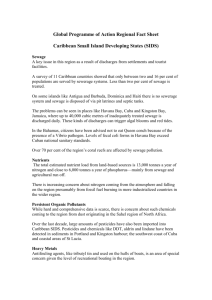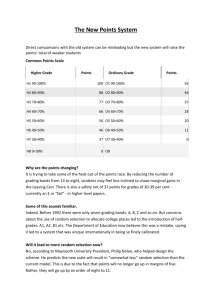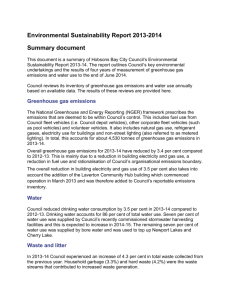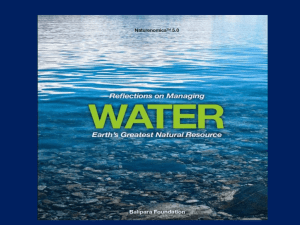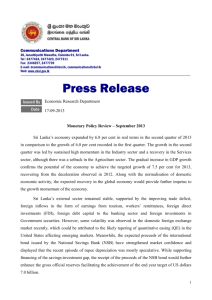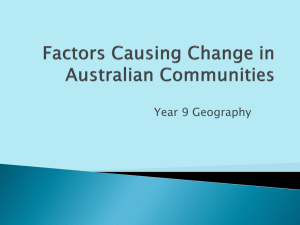Cities. The Facts
advertisement
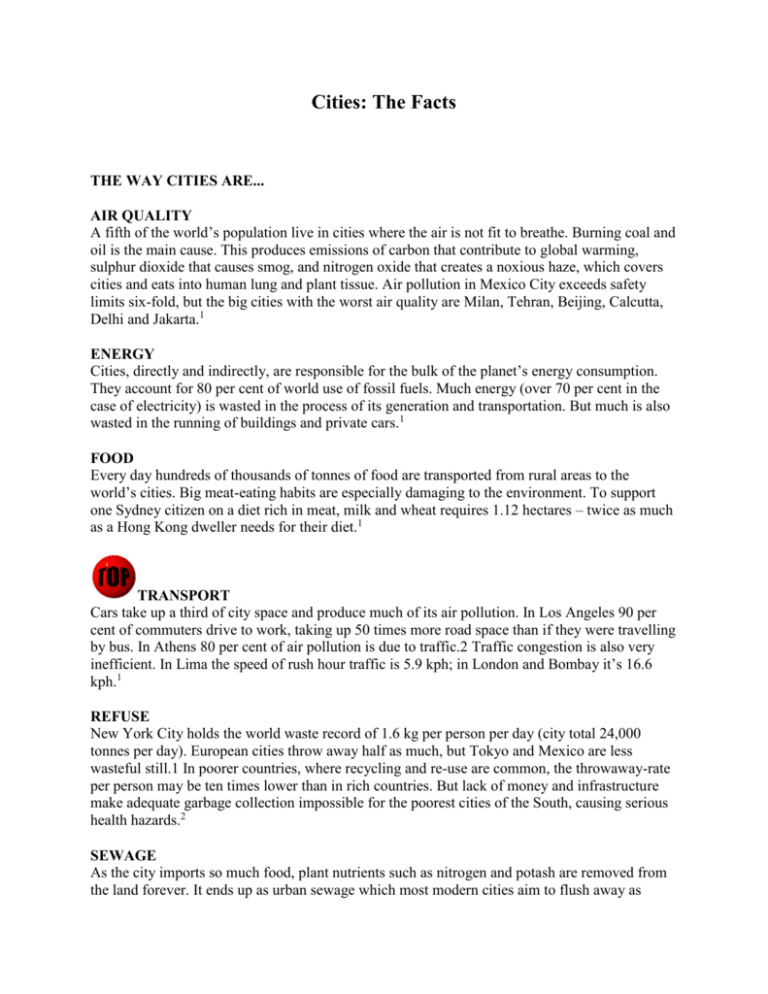
Cities: The Facts THE WAY CITIES ARE... AIR QUALITY A fifth of the world’s population live in cities where the air is not fit to breathe. Burning coal and oil is the main cause. This produces emissions of carbon that contribute to global warming, sulphur dioxide that causes smog, and nitrogen oxide that creates a noxious haze, which covers cities and eats into human lung and plant tissue. Air pollution in Mexico City exceeds safety limits six-fold, but the big cities with the worst air quality are Milan, Tehran, Beijing, Calcutta, Delhi and Jakarta.1 ENERGY Cities, directly and indirectly, are responsible for the bulk of the planet’s energy consumption. They account for 80 per cent of world use of fossil fuels. Much energy (over 70 per cent in the case of electricity) is wasted in the process of its generation and transportation. But much is also wasted in the running of buildings and private cars.1 FOOD Every day hundreds of thousands of tonnes of food are transported from rural areas to the world’s cities. Big meat-eating habits are especially damaging to the environment. To support one Sydney citizen on a diet rich in meat, milk and wheat requires 1.12 hectares – twice as much as a Hong Kong dweller needs for their diet.1 TRANSPORT Cars take up a third of city space and produce much of its air pollution. In Los Angeles 90 per cent of commuters drive to work, taking up 50 times more road space than if they were travelling by bus. In Athens 80 per cent of air pollution is due to traffic.2 Traffic congestion is also very inefficient. In Lima the speed of rush hour traffic is 5.9 kph; in London and Bombay it’s 16.6 kph.1 REFUSE New York City holds the world waste record of 1.6 kg per person per day (city total 24,000 tonnes per day). European cities throw away half as much, but Tokyo and Mexico are less wasteful still.1 In poorer countries, where recycling and re-use are common, the throwaway-rate per person may be ten times lower than in rich countries. But lack of money and infrastructure make adequate garbage collection impossible for the poorest cities of the South, causing serious health hazards.2 SEWAGE As the city imports so much food, plant nutrients such as nitrogen and potash are removed from the land forever. It ends up as urban sewage which most modern cities aim to flush away as quickly as possible. Often this gets mixed up with more hazardous chemical wastes, before being discharged into seas, rivers and lakes – or exported.1 THE WAY THEY COULD BE... ENERGY Solar energy is getting cheaper and cheaper to produce, even in cloudy conditions. Japanese solar-electric roof tiles could make buildings in cities around the world largely self-sufficient. Just using less power is another option: electricity use in a town like Austin, Texas could be cut by over 60 per cent just by using existing eco-friendly devices and practices. Meanwhile, Stockholm, Stuttgart and Helsinki generate some of their own electricity locally (with hot water as a by-product) by using town-centre combined heat and power stations.1 FOOD Cities could grow much of their own food – and many do. Chinese cities like Shanghai are almost self-sufficient in vegetables and grain. Urban vegetable-growing is making a comeback in some Western cities like New York and Berlin, sometimes on urban wasteland and rooftops. If citizens limit their meat consumption, they can also lessen their exploitation of the planet’s fertility.1 TREES Trees are the earth’s natural air conditioners. They absorb harmful carbon and sulphur emissions and filter dust in polluted cities. They also cool down the urban environment: a single tree can transpire 380 litres of water a day. Trees give off oxygen during the day and so help to reduce carbon monoxide and dioxide levels along heavy traffic routes. Planting 50 million trees, taking up 5 per cent of the urban land of St Louis, Mississippi, could mop up the city’s annual 455,000 tonnes of sulphur dioxide emissions.1 SEWAGE Traditionally many towns and cities kept their farmlands productive by recycling human wastes. In Asia especially, using ‘nightsoil’ to compost agricultural land helped to ensure the ecological viability of cities. The human waste was collected by bucket and cart but now special vacuum trucks are used. Pipelines could transport urban sewage back to fertilize agricultural land and forests, anywhere.1 TRANSPORT Cheap, efficient public transport reduces pollution dramatically. Zero-emission vehicles, using hydrogen fuel-cells or solar power have been developed and are in use, on a small scale, in Switzerland and the US. Cycling remains the cleanest and most energy-efficient option, though: a car uses 1,162 calories per passenger km, a bus 575, rail 553, walking 62 and a bicycle only 22. Keeping private cars out of city centres also releases space for public amenities, green areas, food growing and housing.1 RECYCLING Cities with effective recycling schemes have shown that it is possible to recycle 75 per cent of household waste. Using recycled material to make paper uses 30-40 per-cent less energy than processing from virgin pulp. Cities in Japan and the Netherlands currently recycle 50 per cent of their paper and 95 per cent of Swedish cities recycle 80 per cent of aluminium cans. In Cairo alone over 500 small factories recycle plastics, while in Manila, Philippines, and Dakar, Senegal, new garbage management and recycling programmes have also created employment.
